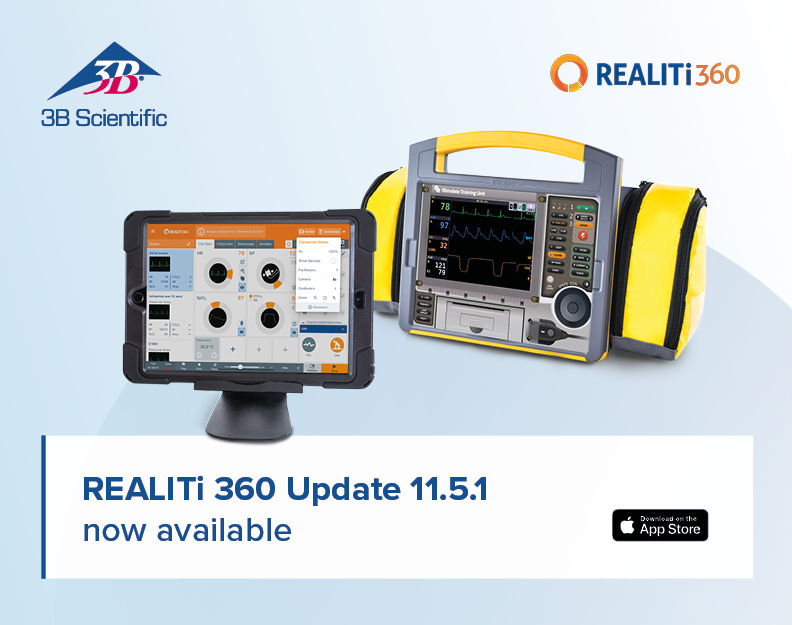Beyond simulation: How Lifecast Body Simulation’s elderly manikins enhance geriatric care training
In the rapidly advancing field of medical training, Lifecast Body Simulation continues to push boundaries with Lifecast Elderly Manikin range, emphasizing not only the physical intricacies but also the individual stories of elderly patients. The elderly manikins—Vivien, Pete and others—serve as pivotal tools in preparing healthcare providers for the complex needs of geriatric care. This blog explores how these lifelike manikins are transforming the training environment, ensuring healthcare professionals are well-prepared to deliver compassionate and effective care to older adults.
The Importance of realism in geriatric training
Geriatric patients present unique challenges due to their varied medical conditions, differing responses to treatment, and the presence of multiple health issues. Lifecast Body Simulation’s elderly manikins, designed with meticulous detail, replicate the physical conditions often seen in older patients, such as reduced skin turgor and edentulism. This level of detail ensures that healthcare providers can practice realistic scenarios, from routine care to emergency interventions.
Unique features of Lifecast Elderly Manikins
Vivien and Pete: Stories that teach
Created from real people – Vivien and Pete by using the ‘life-casting’ and 3D scanning processes, each elderly manikin in the Lifecast range has a backstory that enriches the training experience. Lifecast Adult Manikins are not just anatomical models; they represent real-life complexities and the diverse backgrounds of elderly individuals. These stories help trainees understand the broader context of each patient's health, enhancing empathy and improving the quality of care.
Comprehensive skill development
The elderly manikins come equipped with features that allow for a wide range of medical procedures:
Make Lifecast Elderly manikins a part of your training and enhance emotional intelligence through realistic interactions
Beyond technical skills, interacting with Lifecast Body Simulation’s elderly manikins helps healthcare professionals develop emotional intelligence. Understanding the psychological and emotional aspects of aging patients is critical. Training with manikins that look and feel closer to real human beings helps foster this understanding, preparing caregivers to handle sensitive situations with the dignity and respect that aging patients deserve. As the population ages, the importance of such advanced training tools will only grow, making Lifecast Body Simulation’s innovations a crucial component in the future of medical education. Equip your program with these advanced manikins and see the difference in the preparedness and empathy of your healthcare professionals.
The Importance of realism in geriatric training
Geriatric patients present unique challenges due to their varied medical conditions, differing responses to treatment, and the presence of multiple health issues. Lifecast Body Simulation’s elderly manikins, designed with meticulous detail, replicate the physical conditions often seen in older patients, such as reduced skin turgor and edentulism. This level of detail ensures that healthcare providers can practice realistic scenarios, from routine care to emergency interventions.
Unique features of Lifecast Elderly Manikins
Vivien and Pete: Stories that teach
Created from real people – Vivien and Pete by using the ‘life-casting’ and 3D scanning processes, each elderly manikin in the Lifecast range has a backstory that enriches the training experience. Lifecast Adult Manikins are not just anatomical models; they represent real-life complexities and the diverse backgrounds of elderly individuals. These stories help trainees understand the broader context of each patient's health, enhancing empathy and improving the quality of care.
Comprehensive skill development
The elderly manikins come equipped with features that allow for a wide range of medical procedures:
- Anatomically accurate bodies: Each manikin reflects true-to-life body proportions and conditions specific to aging adults.
- Internal airway management: Trainees can practice intubation and other airway management techniques critical in emergencies.
- Reactive chest for artificial ventilation: This feature allows for the practice of respiratory support.
- CPR capability: Given the high risk of cardiac issues in the elderly, CPR training on a realistic body type is invaluable.
- Intraosseous insertions and IV therapy: These are essential for administering medications and fluids, particularly in emergency care.
Make Lifecast Elderly manikins a part of your training and enhance emotional intelligence through realistic interactions
Beyond technical skills, interacting with Lifecast Body Simulation’s elderly manikins helps healthcare professionals develop emotional intelligence. Understanding the psychological and emotional aspects of aging patients is critical. Training with manikins that look and feel closer to real human beings helps foster this understanding, preparing caregivers to handle sensitive situations with the dignity and respect that aging patients deserve. As the population ages, the importance of such advanced training tools will only grow, making Lifecast Body Simulation’s innovations a crucial component in the future of medical education. Equip your program with these advanced manikins and see the difference in the preparedness and empathy of your healthcare professionals.




